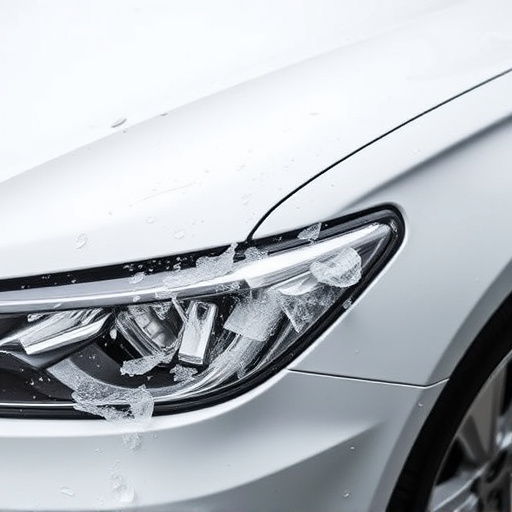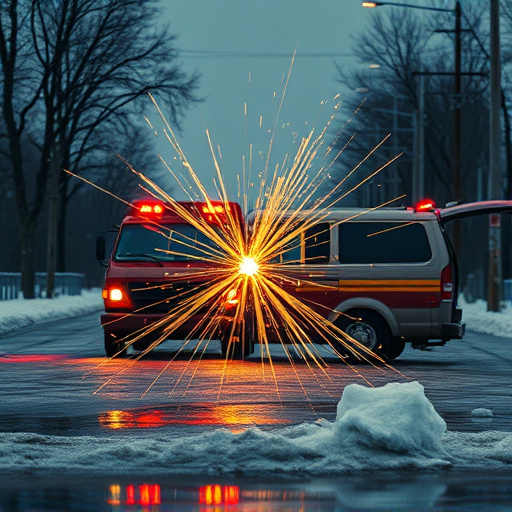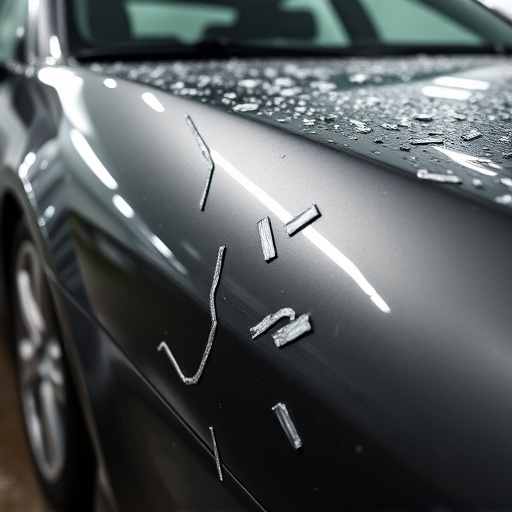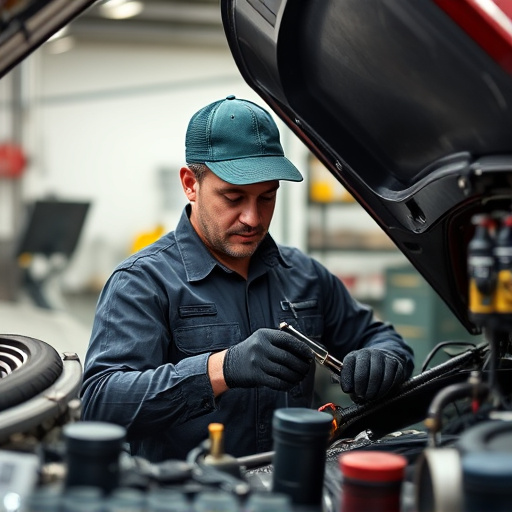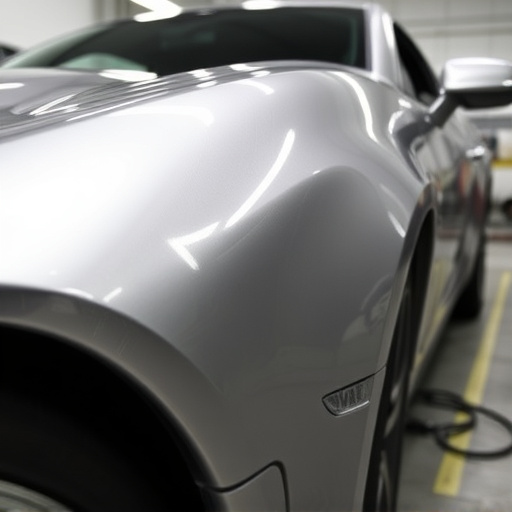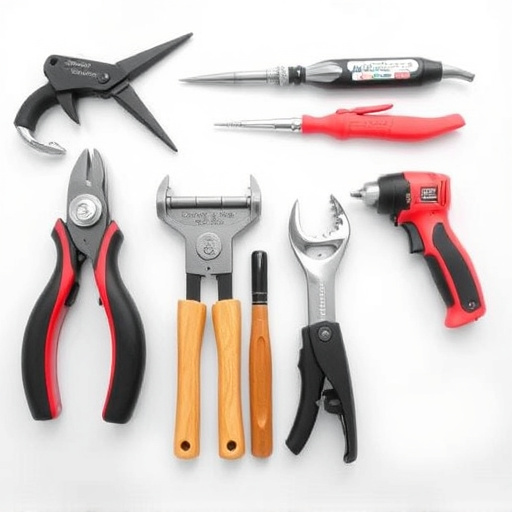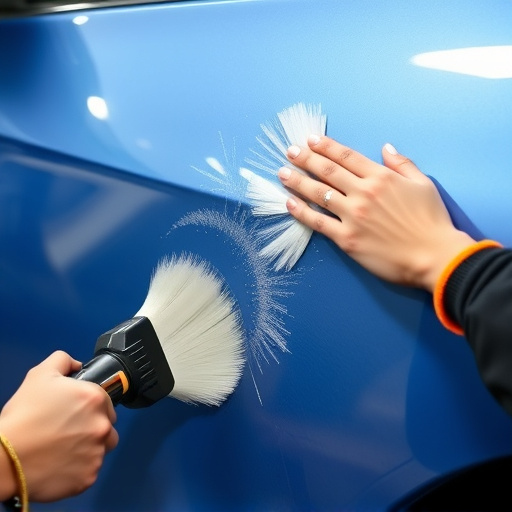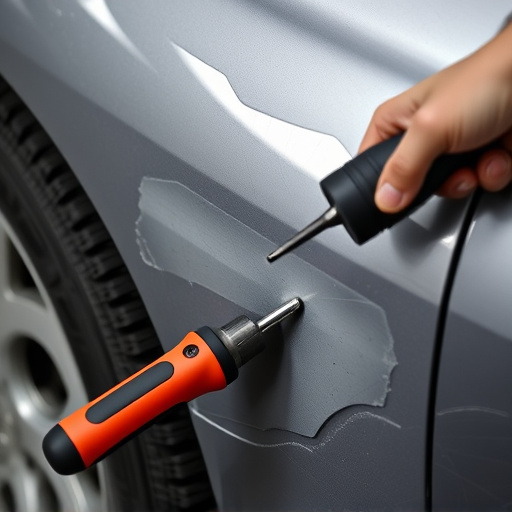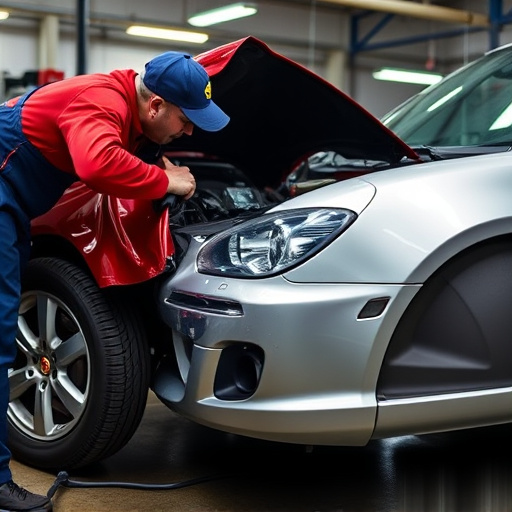Before and after ice damage collision repair, conduct a thorough assessment to identify all damage, including exterior and mechanical components. Clean affected areas and apply protective coatings or sealants to prevent future ice damage. Regularly inspect vehicles for vulnerabilities like roofs, seals, and gaskets, using protective coatings and proper maintenance practices to safeguard against recurring issues.
Ice damage can cause significant vehicle issues, leading to costly collisions and repairs. To avoid repeat problems, follow these essential steps post-repair. Firstly, thoroughly assess the ice damage before beginning the repair process. Next, correctly prepare and seal repaired areas to ensure longevity. Finally, implement preventative measures like proper car maintenance and winterizing techniques to safeguard against future ice-related harm. By adhering to these guidelines, you can protect your vehicle from ice damage collision repair issues.
- Assess Ice Damage Thoroughly Before Repair
- Correctly Prepare and Seal Repaired Areas
- Implement Preventative Measures for Future Protection
Assess Ice Damage Thoroughly Before Repair

Before diving into any ice damage collision repair, it’s crucial to assess the extent of the damage thoroughly. This step is pivotal in ensuring a comprehensive fix that prevents repeat issues. Inspect every inch of the affected area, including the exterior panels, seals, and trim. Even seemingly minor dents or cracks could indicate deeper structural problems exacerbated by the cold weather.
A thorough assessment also involves checking for underlying mechanical or electrical damage that might have been caused by the collision. This includes examining suspension systems, brake components, and wiring harnesses. By taking the time to identify all the issues, you’re better positioned to engage reliable auto repair services that offer both quality and longevity in their ice damage collision repair solutions, ensuring your vehicle is safe and sound on the road again, avoiding future fender bender troubles.
Correctly Prepare and Seal Repaired Areas

After your car has undergone ice damage collision repair, correctly preparing and sealing repaired areas is crucial to prevent future issues. This involves thoroughly cleaning the affected surfaces to remove any debris or salt residue that could compromise the repair. Using a mild detergent and warm water, gently wash the area and ensure it’s completely dry before proceeding.
Once dry, apply a high-quality sealant or coating designed for car paint repair. This protective layer helps shield the repaired surface from harsh weather conditions, including future ice buildup. By doing so, you create an additional barrier that enhances the longevity of the collision repair work, ensuring your vehicle is better equipped to withstand similar damage in the future, even during severe winter conditions.
Implement Preventative Measures for Future Protection

After successfully repairing ice damage on your vehicle, it’s crucial to take proactive steps to prevent similar issues in the future. One effective measure is regular maintenance checks, focusing on areas often affected by ice and snow, like the roof, door seals, and window gaskets. Keeping these components in top condition can significantly hinder water intrusion.
Additionally, consider upgrading your vehicle’s protective coatings or applying specialized sealants designed to ward off ice build-up and stains. For luxury vehicle repair enthusiasts, investing in high-quality, weather-resistant finishes and accessories can be a game-changer. Even simple practices like ensuring proper drainage of standing water around the car and clearing snow promptly can contribute to long-term protection against future ice damage collision repair needs.
To prevent repeat issues from ice damage collision repair, thorough assessment and correct preparation are paramount. Implementing preventative measures ensures future protection against freezing conditions. By following these steps, you can maintain a robust defense against ice damage, safeguarding your vehicle’s integrity and aesthetics for an extended period. Ice damage collision repair doesn’t have to be a recurring concern—proactive measures can make all the difference.
